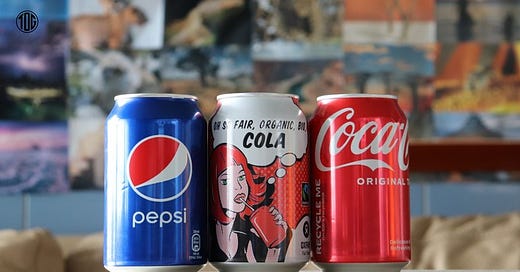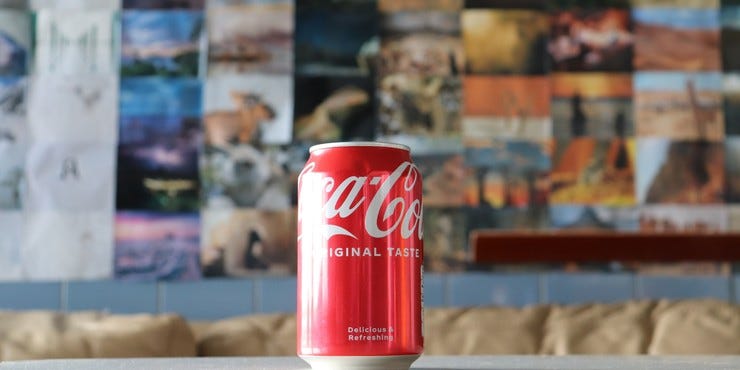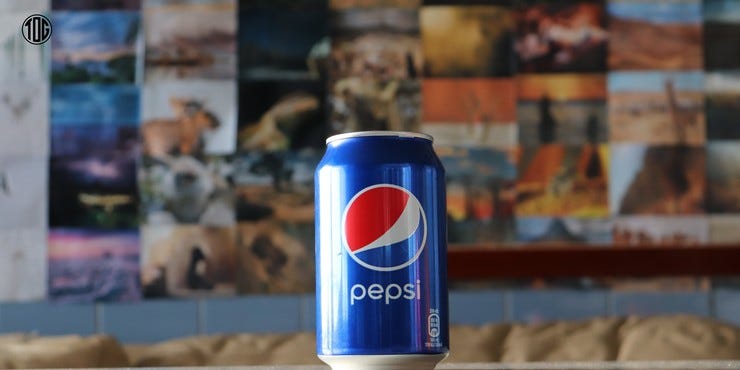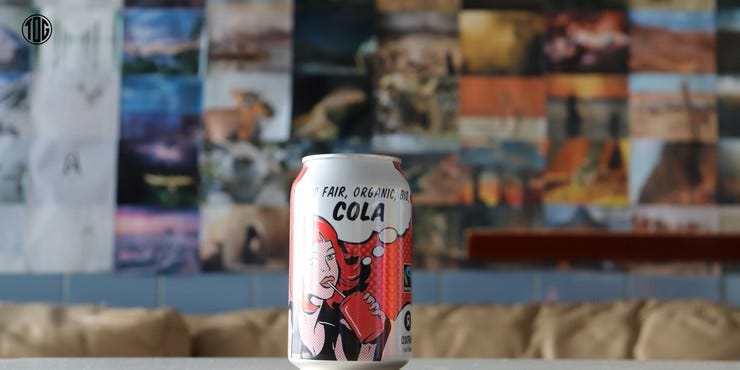The Organic Guy™ Newsletter - Ditch Coke & Pepsi For An Organic One
Having a chance to drink a coke in the village was a privilege and it certainly gave you some sort of status within the village if you could afford it. I remember mothers notoriously used it to keep their children's quite. As the routine was, is your child crying? then they probably need a coke to keep then quite. And most often than not, it actually worked. Time has flown by very fast and i have gone from craving it to now being five years since i drank a coke.
If every drop of Coke ever produced were put in 8-ounce bottles and laid end-to-end, they would reach the moon and back over 2,000 times.
That being said, Its hard to ignore the humble and troubling beginnings of the beverage to now being one of the most consumed product in the world. To bring you up to speed of the magnitude of the product, All round the world, the average person consumes a Coke product every four days while if every drop of Coke ever produced were put in 8-ounce bottles and laid end-to-end, they would reach the moon and back over 2,000 times.
The product which was invented in the late 19th century by John Stith Pemberton saw it rise and dominate the world of soft-drink market throughout the 20th century. This might not shock many but In the Pemberton’s original recipe, the product did indeed contain cocaine in the form of an extract of the coca leaf, which inspired the “Coca” part of the beverage’s name. The other part of the name “Cola” comes from the kola nut (which contains caffeine, another stimulant).
In the Pemberton’s original recipe, the product did indeed contain cocaine in the form of an extract of the coca leaf
While the exact content, formula and the natural flavorings have been guarded as a trade secret since Coca-Cola's inception, Majority of its ingredients are actually listed on any can or bottle of Coca-Cola or even on their website, which include:
Carbonated water – Approximately 90% of Coca-Cola is water. The carbonated part is purified carbon dioxide, which gives the drink its “bubbles” or “fizz”.
Sugar – Coca-Cola Classic’s sweet taste (and also some of its mouthfeel) comes from sugar. Coca-Cola Zero Sugar and Diet Coke are sugar free.
Caramel color – A very specific caramel is made especially for Coca-Cola, to give the drink its characteristic color.
Phosphoric Acid – The tartness of Coca-Cola comes from the use of phosphoric acid.
Caffeine – The slight bitterness in the taste of Coca-Cola comes from caffeine
Natural flavors – The essence of the secret formula of Coca-Cola is its blend of natural flavors. This is the most protected and secret part of the formula
With the majority of its recipe is out in the public, this has seen the rise of other brands within the cola beverage market seeking to replicate coca cola’s success. Pepsi is such a brand that has played second fiddle to the crown. But they are really all the same but really bad from your health’s point of view.
For example, Pepsi did use Aspartame up until 2015 when they decided to drop it from the list of their sweeteners. Aspartame does have concerns that it might be carcinogenic. A link has also been shown between long-term regular cola intake and osteoporosis AKA low bone mineral density in older women.
This is thought to be due to the presence of phosphoric acid used in the cola's. On the other hand, we do know that Coca-Cola is rich in sugars, especially sucrose which causes dental caries when consumed regularly while the high caloric value of the sugars themselves can contribute to obesity.
With such a popular product likely Not going anywhere, As the organic movement, we can pound our head in the sand and wish it go away or we can provide a healthy alternative for the consumer. And as organic has always shown over the years, it does step in and provide that option. While there are several cola organic options that you can indulge yourself with, i have tried this one from Oxfam and its taste has been great to my mouth.
As the organic movement, we can pound our head in the sand and wish it go away or we can provide a healthy alternative for the consumer. And as organic has always shown over the years, it does step in and provide that option.
So how does the organic cola compare with coca cola and Pepsi? Well, for sure we do know that an organic one is made up from organic ingredients while the other two are made of some nasty ingredients. The organic cola’s ingredients include; sparkling water, cane sugar°, lemon juice made from concentrate°, BARLEY MALT extract, natural flavorings (° ingredient from organic agriculture)
In terms of pricing, Per 330 ml, the organic cola can be bought at 94 cents, Coca cola at 69 cents and Pepsi at 54 cents all in euros. Per 100 ml organic cola has Energy - 41 calories, sugar - 10 g. Pepsi has Energy - 41 calories, sugar -11 g. While coke has Energy - 42 calories, sugar - 10.6 g.
The stats may seem to make no difference at all, but the real difference is at the ingredients used. one is made from live and real ingredients while the others are made from dead and artificial ingredient. so if you find yourself addicted to coke, there is a better option for you to go for. otherwise, as the famous footballer Cristiano Ronaldo once said, just drink water.
***********
XOXO
Top Organic Products of The Month.
Podcasts Episodes You Might Have Missed!
My Organic Product Of The Week!
This is a weekly series that i will be sharing with you my organic product of the week. My hope is that by the end of the year, you will be inspired by the amazing variety of organic products that there is to choose from! - So be sure you have subscribed to my youtube channel or you are following me on instagram to ensure you don't miss any update!
Organic & Science
Organic and Science is a series of posts i release every monday to highlight peer reviewed science that supports organic some of which most scholars probably dont want you to see. Always be on the look out for that. And if you are NOT following me on social media, Do so here!











